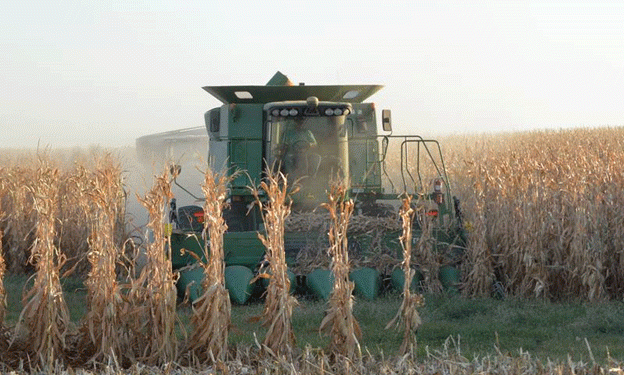In its December 10 report, the U.S. Department of Agriculture (USDA) revised its supply and demand estimates for corn, wheat, and soybeans, making key adjustments that could have significant effects on farming operations, trade, and pricing. Among the biggest changes were lowered corn ending stocks, increased corn export projections, and adjustments to global wheat supply forecasts.
Corn Stocks and Exports
For the 2024-2025 marketing year, the USDA raised its corn exports by 150 million bushels, bringing the total to 2.5 billion bushels. This change was attributed to the strong pace of sales and shipments observed in recent months. Additionally, ethanol production was increased by 50 million bushels, based on higher-than-expected corn usage for ethanol production, which was the highest recorded since 2017.
As a result, the USDA has lowered its ending stocks for corn by 200 million bushels, bringing the total to 1.7 billion bushels. This reflects a reduced supply, as demand for U.S. corn has remained strong, especially with the increase in exports and ethanol usage. On the global stage, foreign corn production has also been revised downwards, particularly in the EU, Mexico, and Indonesia, though Ukraine saw an increase.
Soybeans and Oil Adjustments
Soybean forecasts were largely unchanged, though there were some adjustments to prices and global production. The U.S. soybean price was lowered by 60 cents, reflecting market conditions. The soybean meal price was also reduced by $20 per ton.
The USDA increased soybean oil exports by 500 million pounds to 1.1 billion pounds, driven by higher export commitments. However, soybean oil ending stocks are expected to remain similar to the 2023-2024 marketing year, with global soybean oil supplies tightening.
On a global scale, the USDA raised global soybean production by 1.7 million tons to 427.1 million, driven by increased acreage in Argentina and Bolivia and higher yields in Canada.
Wheat Stocks and Exports
For wheat, the USDA adjusted the season-average farm price to $5.60 per bushel, with exports increasing by 25 million bushels. The U.S. is forecasted to export 850 million bushels of wheat, a positive outlook amid global supply challenges. Notably, white wheat exports were revised up by 15 million bushels, with increased shipments to East Asia.
Despite these increases, wheat stocks were revised down by 20 million bushels, bringing the total to 795 million bushels. This is still a 14% increase from the previous year, reflecting a tighter supply and stronger demand for U.S. wheat.
Globally, wheat production has been revised lower, especially in the EU, where production fell by 1.3 million tons. The USDA also reduced projections for Brazil’s wheat crop due to updated harvest data. Conversely, Ukraine and the U.S. are expected to boost their wheat exports, partially offsetting lower exports from Russia due to an export quota.
Global Outlook
On a global scale, corn stocks were reduced by 7.7 million tons, bringing the total to 296.4 million tons. In contrast, global wheat ending stocks were slightly raised to 257.9 million tons, but remain at their lowest since the 2015-2016 marketing year.
Implications for Farmers and the Global Market
The USDA’s revisions signal tightening supplies for both corn and wheat, driven by strong domestic and global demand. For corn farmers, the lowered ending stocks and increased export projections suggest potential price support, particularly with the growing demand for ethanol and exports. However, the USDA’s expectation of lower global production means that foreign competition for U.S. crops may intensify, especially in Europe and Mexico.
For wheat producers, the higher export expectations reflect opportunities in East Asia and potentially greater international demand, though tightening global supplies may influence price volatility. As wheat production declines in Europe, the U.S. may play a larger role in meeting global demand, but export quotas in Russia could constrain trade.
Soybean farmers face a more stable outlook but will need to monitor the impact of fluctuating soybean oil prices and export dynamics. Overall, the USDA’s updated projections indicate a potentially bullish outlook for U.S. agricultural exports, with key opportunities in corn and wheat, although the volatility in global supplies and trade policies will remain a key factor.
Error




